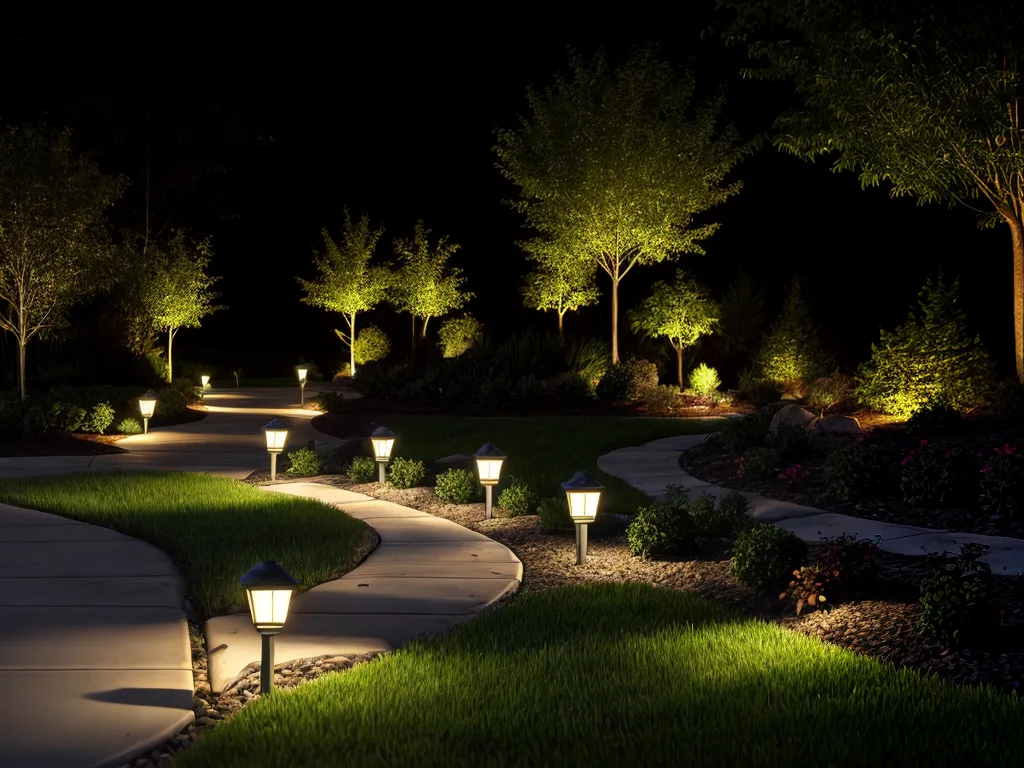
Minimizing Voltage Drop in Low-Voltage Landscape Lighting Circuits
Introduction
Voltage drop is a common issue in low-voltage landscape lighting systems that can cause lights to dim or fail to turn on. As a landscape lighting designer, minimizing voltage drop is crucial for ensuring your lighting circuits perform optimally. In this article, I will provide an in-depth look at the causes of voltage drop and the various methods to minimize it in low-voltage lighting circuits.
What Causes Voltage Drop?
Voltage drop occurs when there is resistance to the flow of electrical current through a conductor. This resistance restricts the flow of electrons and reduces the voltage available to the load devices in the circuit - in this case, the landscape lights. There are three main factors that contribute to voltage drop:
Length of Run
The longer the wiring run from the transformer to the lights, the more resistance there is and the greater the voltage drop. Wire length has the biggest impact on voltage drop.
Wire Gauge
Thinner wires have higher resistance due to their smaller copper cross-sectional area. The lower the wire gauge number, the thicker the wire and the lower its inherent resistance. 12 AWG wire is commonly used in low-voltage lighting circuits as it offers a good balance between conductivity and flexibility.
Total Light Wattage
The more watts of lighting load on a circuit, the greater the current draw. Higher current flow means more voltage drop across the wire resistance. Careful load planning is important to minimize voltage drop.
Consequences of Voltage Drop
Excessive voltage drop can cause several issues, including:
- Dimming of lights - As the voltage drops, the lights receive less power and become dimmer.
- Flickering lights - Voltage drop may cause some lights to intermittently flick on and off.
- Failure to illuminate - In severe cases, the voltage can drop so low that some lights fail to turn on at all.
Voltages below 10-11V at the fixtures are likely to cause problems. Anything below 9V will almost certainly result in lighting failures.
Methods to Minimize Voltage Drop
There are several effective techniques to reduce voltage drop in low-voltage lighting circuits:
1. Use Lower Wattage Bulbs
Using lower wattage bulbs, such as 4W or 6W, reduces the total wattage on the circuit. This lessens the current draw and therefore lowers voltage drop. However, too low of a wattage can also cause problems. I recommend 5W or 6W LED bulbs as a good balance.
2. Increase Wire Gauge
Upsizing the wiring to a thicker gauge like 10 AWG reduces the inherent resistance. This allows more current to flow with less voltage loss. However, thicker wire is less flexible and more costly.
3. Shorten Wire Runs
Keeping wiring runs as short as possible is one of the most effective ways to curb voltage drop. For particularly long runs, I recommend dividing into multiple circuits fed from different transformers.
4. Use Multiple Circuits
Splitting a large circuit into multiple smaller circuits distributes the lighting load and significantly reduces voltage drop. For example, 3 30W circuits will have less drop than 1 90W circuit over the same distance.
5. Use a Larger Transformer
A higher wattage transformer (i.e. 300W instead of 150W) will output slightly higher voltage, allowing lights at the end of a run to receive adequate voltage. However, transformers still need to be properly sized for the load.
6. Use Heavier Gauge Supply Wire
The main supply wire from the transformer to the first light fixtures has the greatest current flow. Upsizing just this lead wire (e.g. to 10 AWG) can help reduce voltage drop where it has the most impact.
Voltage Drop Calculation
For a more accurate assessment of voltage drop, a simple calculation can be performed:
Voltage Drop = (Total Circuit Watts x Circuit Length) / Cable Constant
The cable constant depends on the wire gauge - for common 12 AWG landscape wire it is 21. For a 60W lighting circuit at 150 ft from transformer:
Voltage Drop = (60W x 150ft) / 21 = 4.3 Volts
This exceeds the 3 Volt drop rule of thumb, indicating actions should be taken to reduce it.
Summary
Left unchecked, voltage drop can cause frustrating lighting issues. By following the tips outlined in this article such as using lower wattage bulbs, heavier gauge wire, multiple circuits, and keeping wire runs short, voltage drop can be minimized. Adequate planning and design is crucial to ensure optimal performance and enjoyment of your low-voltage landscape lighting system.